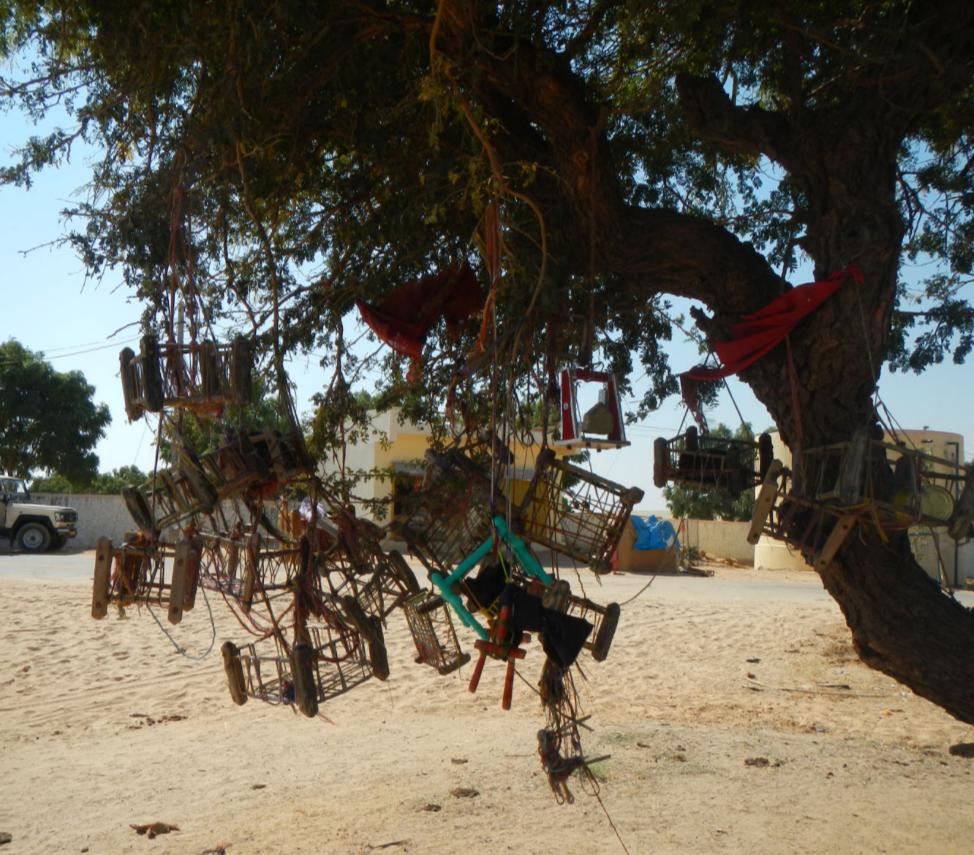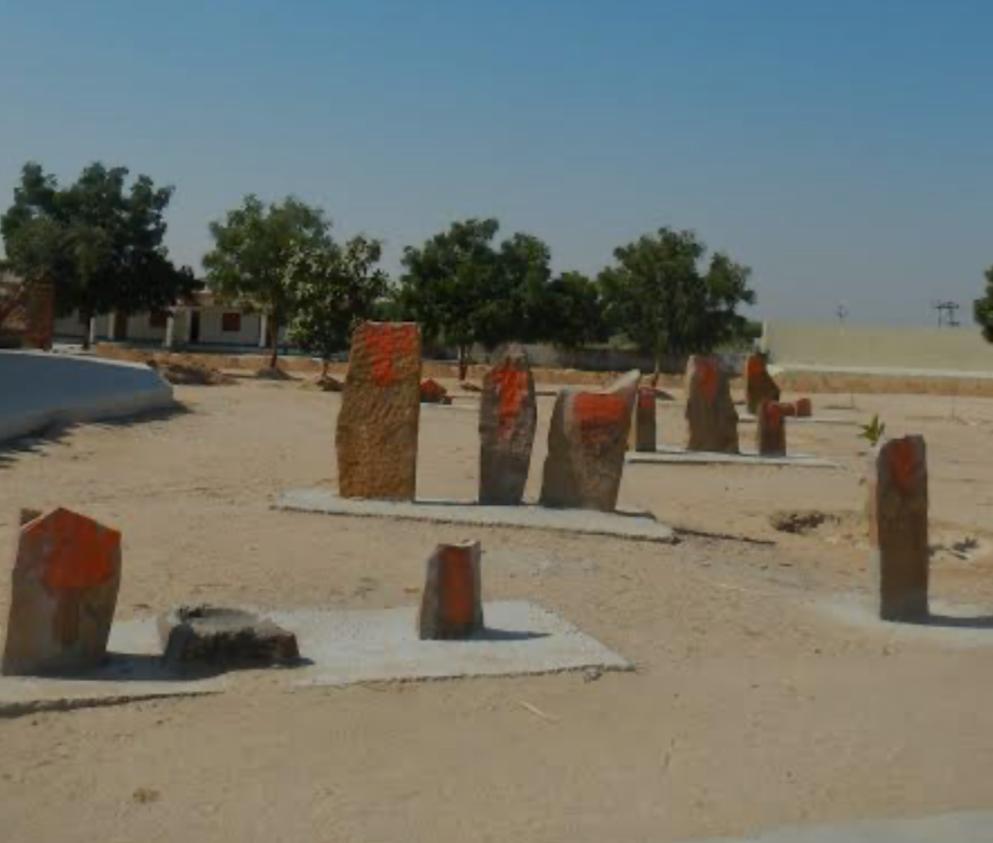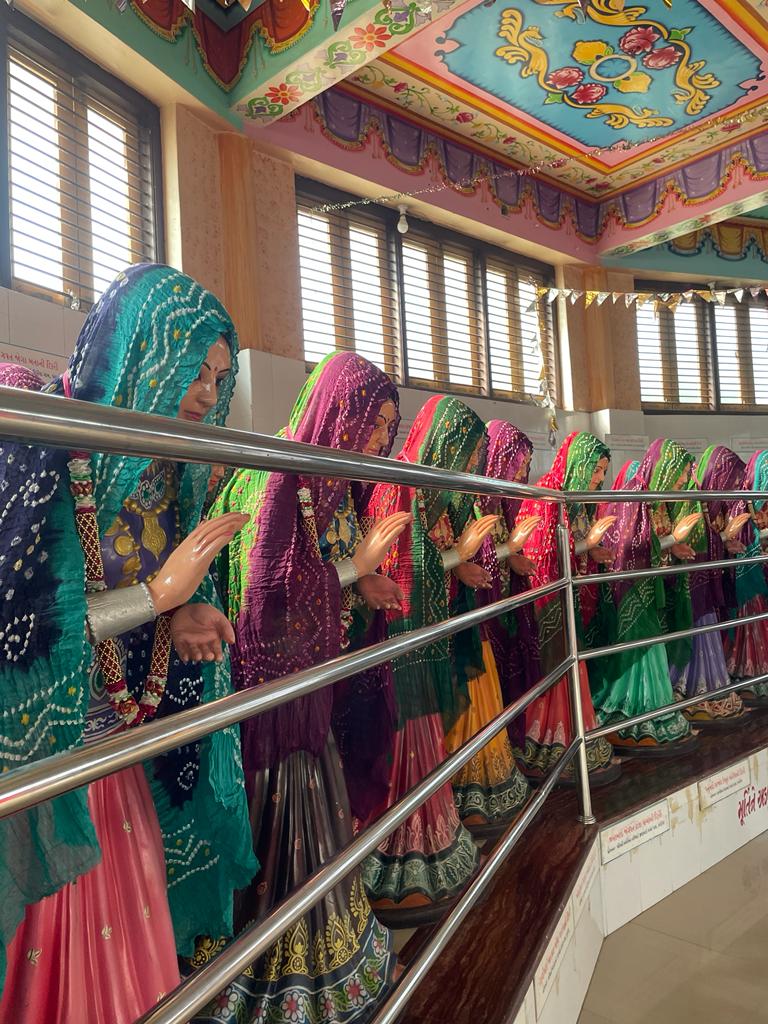As part of my fellowship, I am in Gujarat. I am working in Vagad village of Kutch and have the opportunity to experience new cultures and explore new places. When I arrived in Kutch, I had a strange feeling of how I would fit into this new environment. That feeling was short-lived. The lovely community I met here has warmly wrapped me in a way that I feel that I have found my second home here. Kutch is a beautiful destination with religious and historical sites. I also find it very interesting to visit villages and learn about their history and its people’s beliefs.
Vrajvani of Kutch
Vrajvani is a village in Rapar Taluka of Kutch, Gujarat. This village boasts a beautiful temple with its own spiritual significance in people’s hearts and minds. In front of the entrance gate of the temple, there is a tree with miniature cradles beautifully hanging on it. It immediately stirred my curiosity. I stepped inside wondering what does all of this mean? Who ties these miniatures and why?
I approached a nearby Chai vendor and struck a conversation to try and find some of the answers. He told me that there was a common belief in their local community. Childless couples, or those who could not conceive children would hang miniature cradles on this tree. They pray to be blessed with a child. However, this is not the main reason for Vrajvani’s fame.

As I entered the temple I noticed orange stones randomly clustered in groups of two to three. Again the curiosity to know what it was knocked at my mind. There, I saw the pujari of the temple and felt that I had found the right person to ask my questions. The Panditji narrated that, a few hundred years ago, during the celebration of Janmashtami, a man had come here with a dhol and started playing it. Ahir women (both unmarried and married) came out of their homes and started dancing to the rhythm of his dhol. This performance continued for days, with neither the man stopping nor the women ceasing their dance. The local community believes that the musician who played dhol was the reincarnation of Lord krishna. And therefore that day they recreated the Raas-leela between Krishna and Gopi here.

Men’s Anger vs. Women’s Faith
This incident angered the men of the Ahir community, especially the husbands of the dancing women. They attempted to stop the man from playing the dhol but were unsuccessful, leading to the death of the musician. After witnessing the musician’s death, the women refused to move and return back home. In fact, they stood at the same place and took Samadhi.
People say the orange-coloured stones inside the temple resemble the effigy of women, remembering them as sati. Even though the musician was not their husband, the temple treats them as sati. The temple compound has 140 big and small stone slabs marking their positions. The temple also has 140 life-sized statues of Ahir women bowing to the musician believed to be Lord Krishna at the sanctum sanctorum. The names of all 140 women are written on the board along with their husbands’ or fathers’ names.

Women of the Ahir community come here during every special occasion and perform garba with full joy and faith. Interestingly, over the years men have begun to respect Ahir women’s faith and join the garba with them. I also joined them during my visit. What fun it was to play garba in these Kutch villages!
After listening to the people’s stories and seeing all this, I started thinking a little more about Sati. Even if this was not exactly Sati, what was going on in the minds of those women? What were their feelings? Was that man, who was not even their relative, more important to them than their husbands and families? Or was it just the love for music that made them accept death? Is that what we refer to as the trance of Gopis when Krishna played? Have those women achieved Nirvana so that there was nothing more to live for once the music stopped?
Gedi village of Kutch
Gedi is one of the Kutch villages in Rapar Taluka. One of the oldest villages in Kutch, it claims to be Viratnagar- like many other towns- that sheltered the Pandavas. It is said that the Pandavas stayed here for one year. There is a beautiful white limestone temple of Mahadev Achaleshvar here as well. It was built about 500 years ago by a Sachora Brahman, Goval Dave.
When I roamed around the center of the village, I found a well. People do not use its water for drinking. While standing near the well, I felt a strong smell of ghee. After asking people, I came to know that it was from the well. Since the well contains more ghee than water, its water is not used for drinking. People believe that offering ghee in the well after touching it with the ear can cure ear related diseases or problems. People from different parts of Kutch come here with this belief and pour ghee into the well.
The Stones of Kutch, Again!
Roaming around the well, I found the orange stones again at its backside. They were similar to those I saw in Vrajvani. As I went near it, I saw that human and animal figures were drawn on it. I got to know from villagers that their ancestors found these stones during the construction of their homes. And now they take care of all these things as they remind them of their history. In every festival, people clean these stones and paint them.

I was fascinated by people’s beliefs and the way they explained so much about their village and its history. This visit made me think about how these villagers in Kutch were preserving and taking care of their history. They have taken it as their responsibility. People handle every bit carefully, connecting them to their culture and their village, all within a community filled with love.




0 Comments